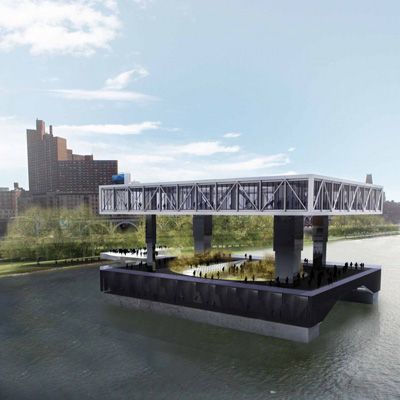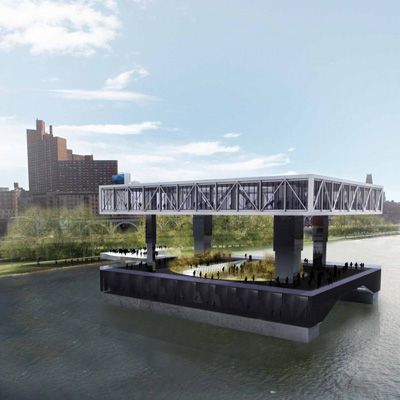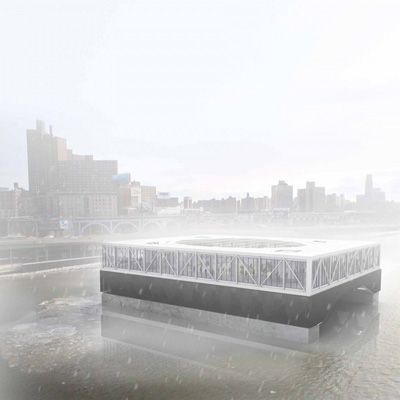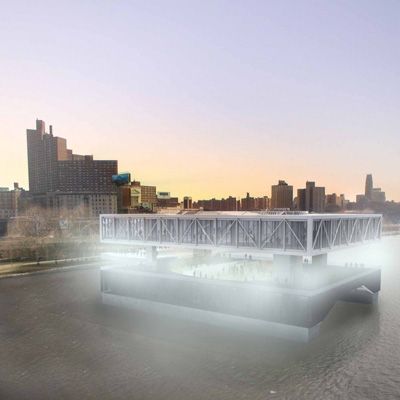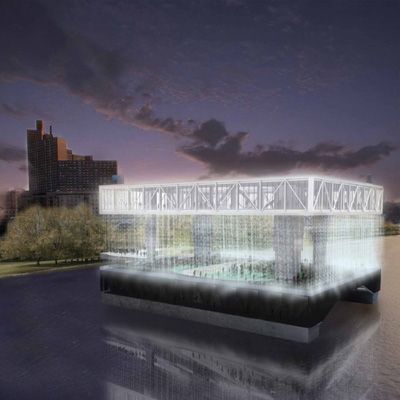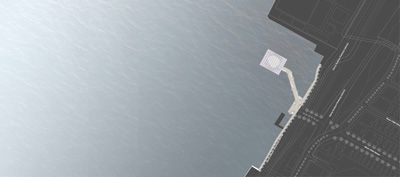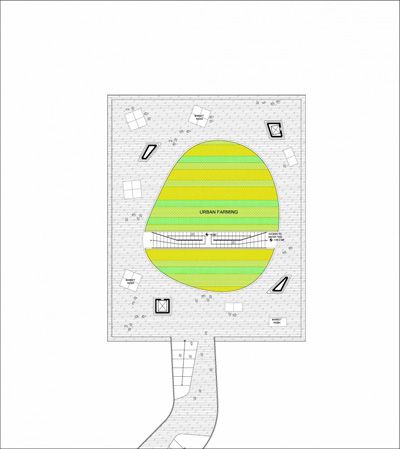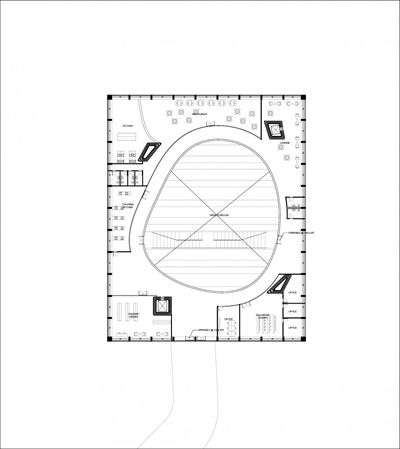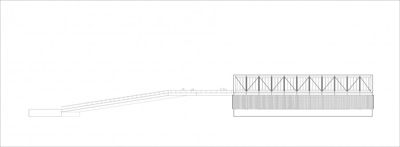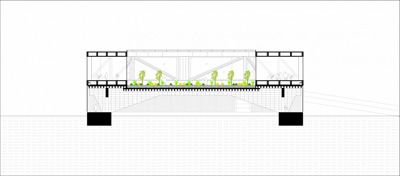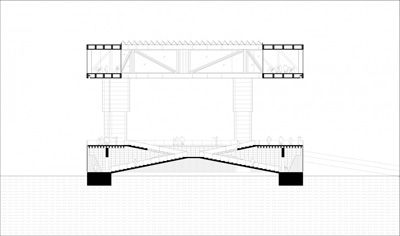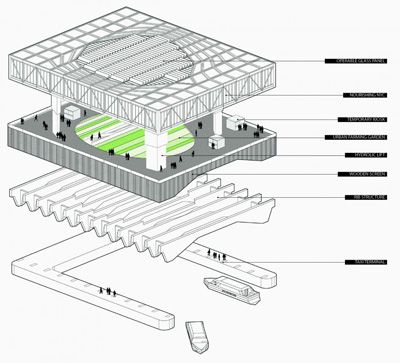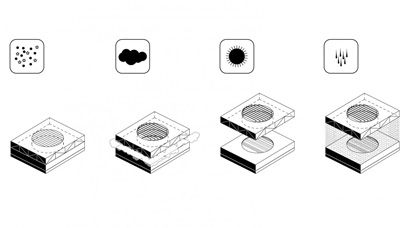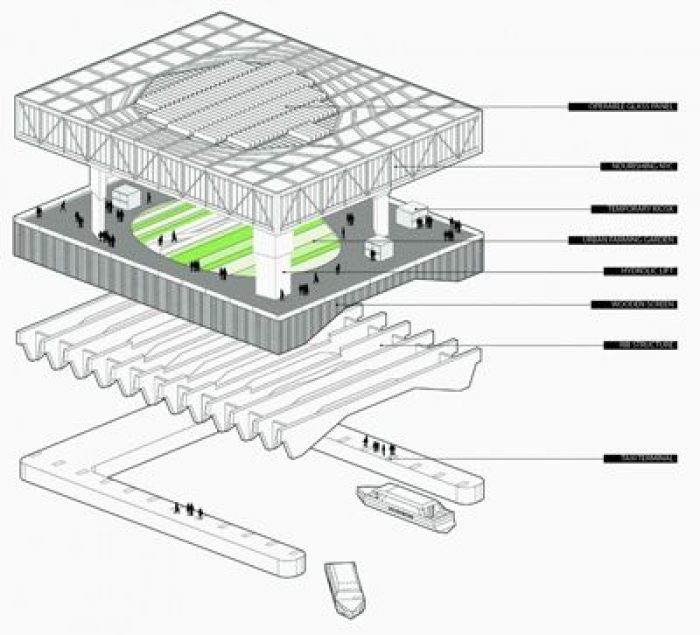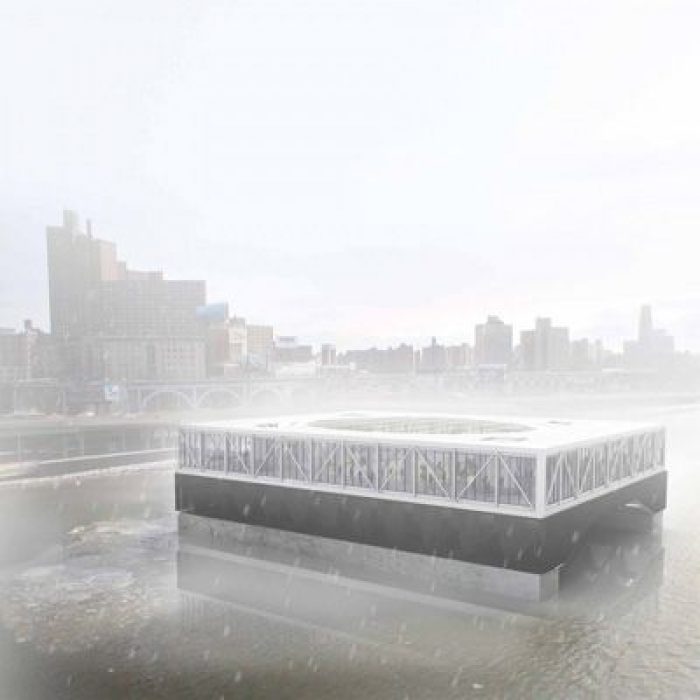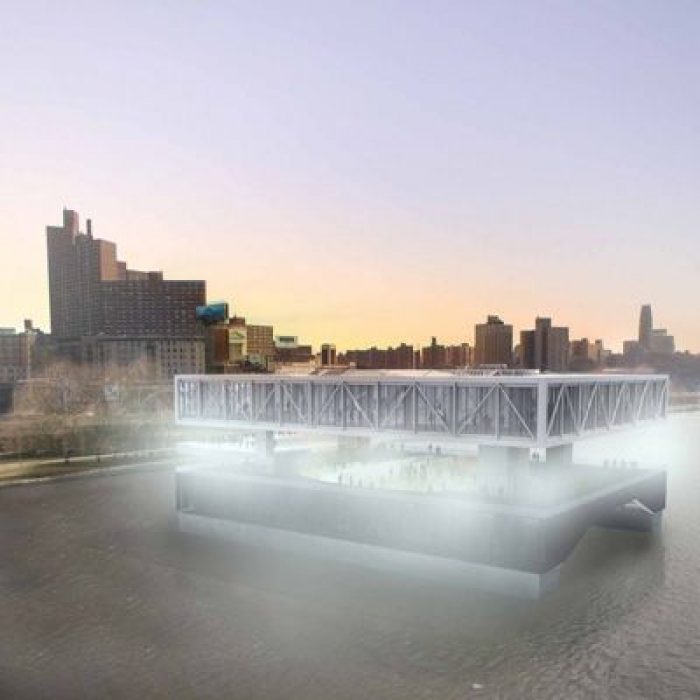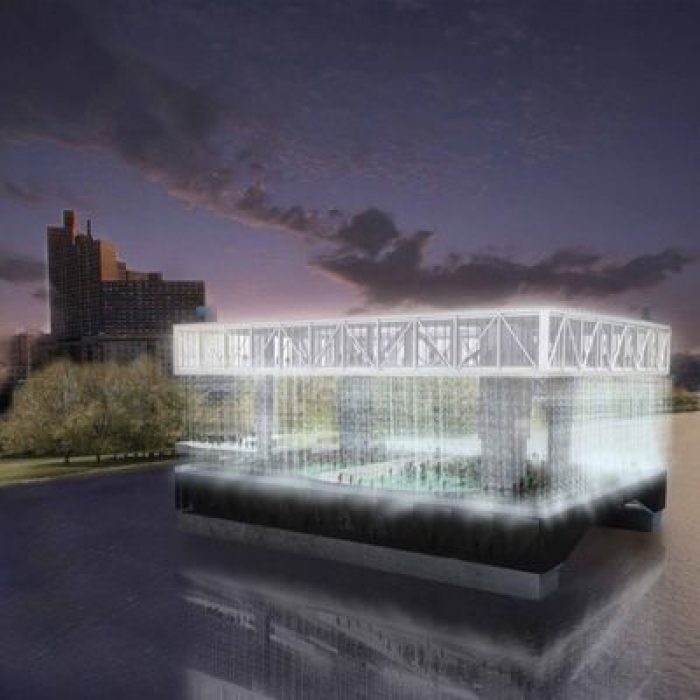As we humans become more and more numerous, I believe- and I’m fairly sure this is a non-controversial belief- that we will have to become more and more metropolitan. Cities are the only typology with much hope for a sustainable, large-population society. And yet there are many holes in this. Where, for example, will food come from? How will waste be managed? How will humans, who have evolved with predominantly horizontal movement, deal with an overwhelmingly vertical landscape?
Well, I don’t have answers for the latter two questions, but I do have an example of a solution to the farming question. The Harlem Edge, designed by PRAUD is a proposal for a highly versatile urban farm. Typical problems for this typology are space, seasonality, and irrigation. And the responses put forth by PRAUD might be characterized by a single roman character. The (/). The potential problem with the backslash is that something can, instead of doing one thing quite well, do two things rather poorly. So someone should get this Harlem Edge built. Not only to provide fresh produce to the inner city and things for kids to do after school, but to see if it works and works well.
The ‘lid’ of the ‘Edge is designed to be lowered down over the farm when winter arrives, creating an urban greenhouse in order for cultivation to occur year-round. When spring arrives the lid is raised and here it becomes a little fuzzy for me. Moisture is released in cloud form, creating a new, surprising environment for those experiencing the transformation. Where this moisture comes from is… unclear. Could it be moisture that has been stored up?
Where is it stored? Also after the transformation to ‘fully-extended-lid-condition’ there is, according to the architects, the possibility for the upper mass to ‘create a rainy environment as an environmental attraction as well for irrigation’. Is this a rainy environment that is created and provided by the building? Or is it something natural that happens around the building, which the run-off from then creates a wall of water sort of thing? A potential answer to this is the importance PRAUD places on natural irrigation. They state that while a necessity in rural farming, artificial irrigation should be avoided as much as possible in the urban environment, tending towards a reliance on natural conditions. I leave off with a statement by the architects, speaking of this aspect. I find it to be a question without being phrased as such. ‘Unlike in a farm land where developed irrigation systems are, urban farming should strictly depend on natural climate conditions. Together with mechanical means, the system allows different types of climate so that climate conditions for urban farming can be more controlled.’
